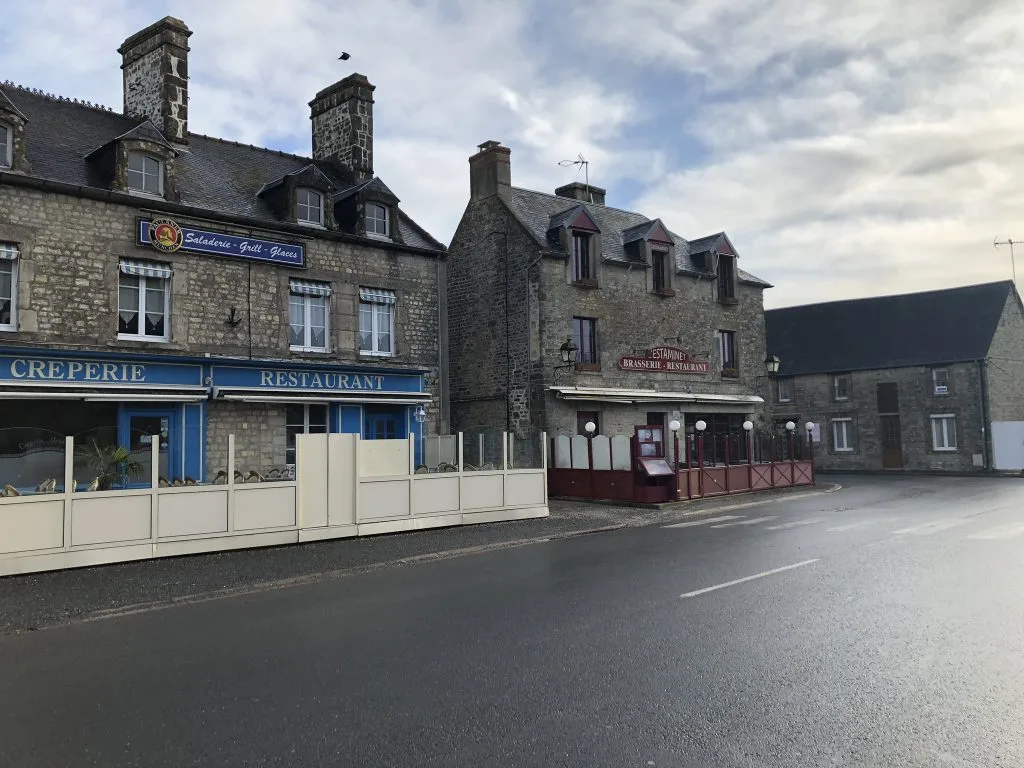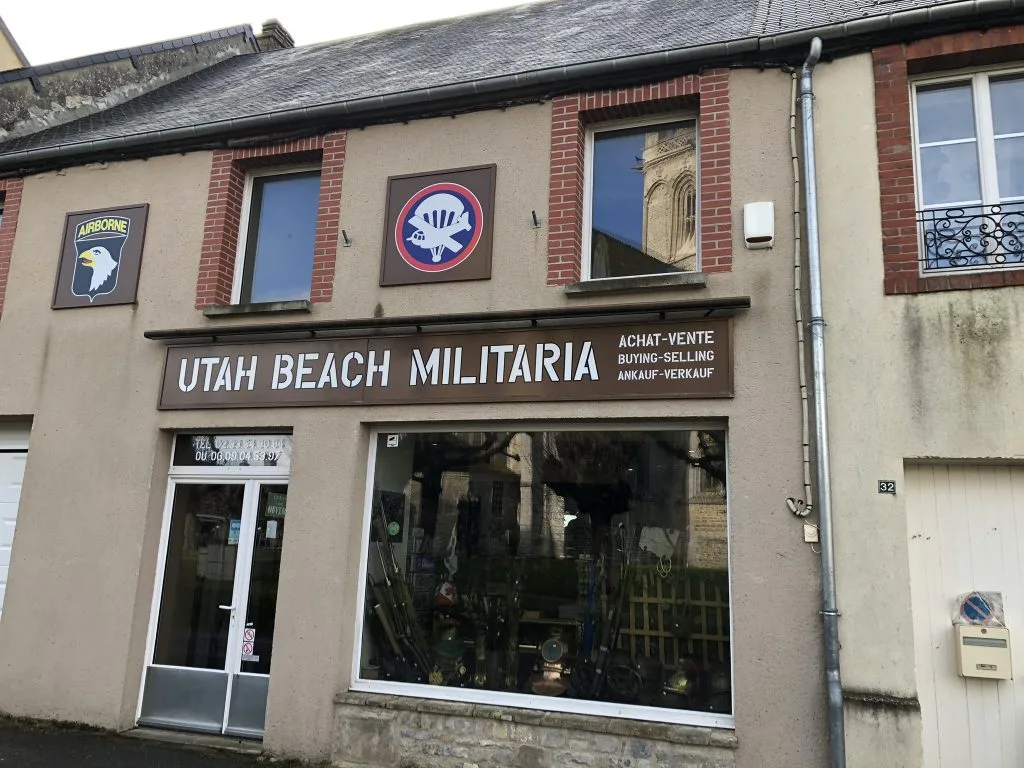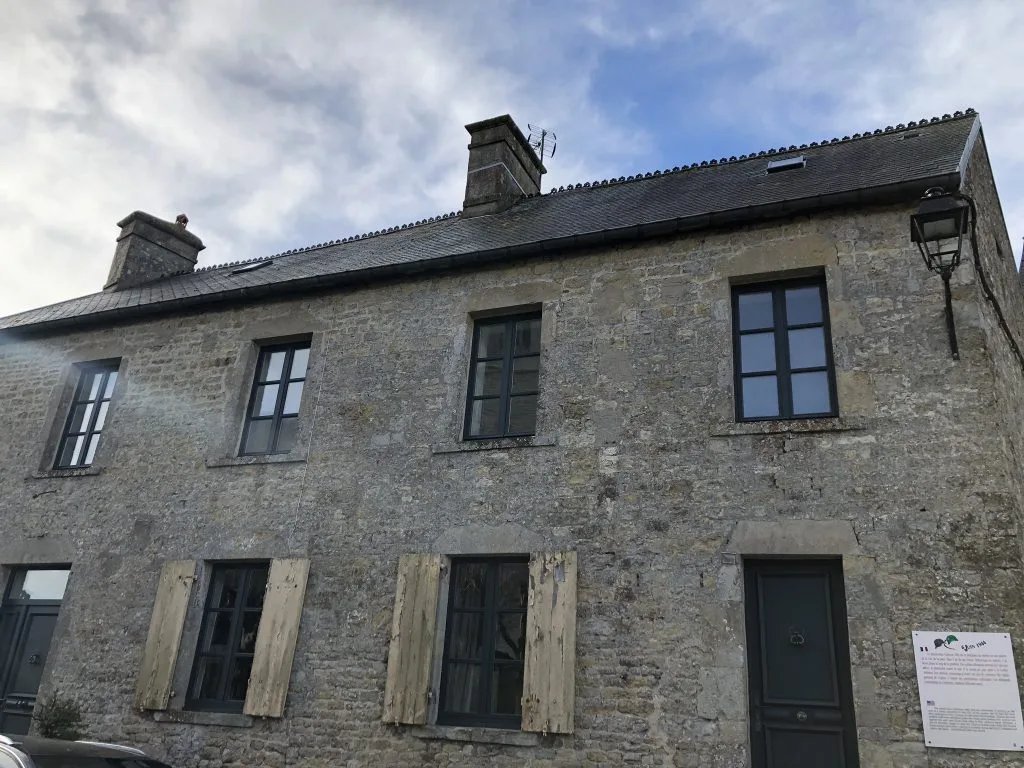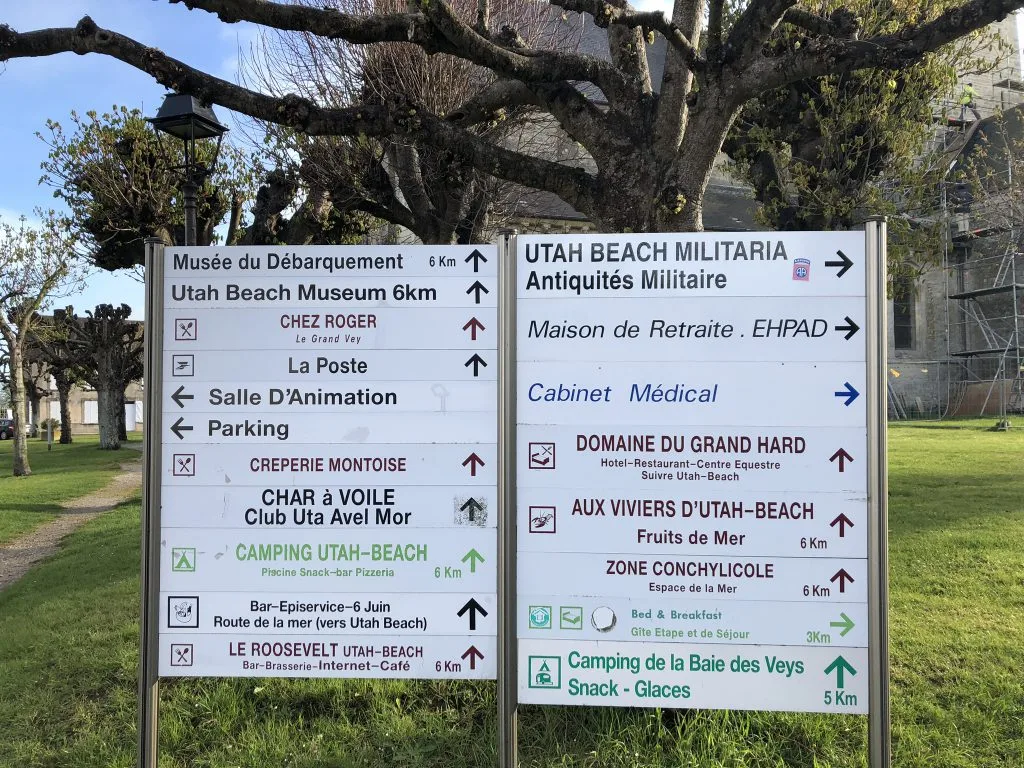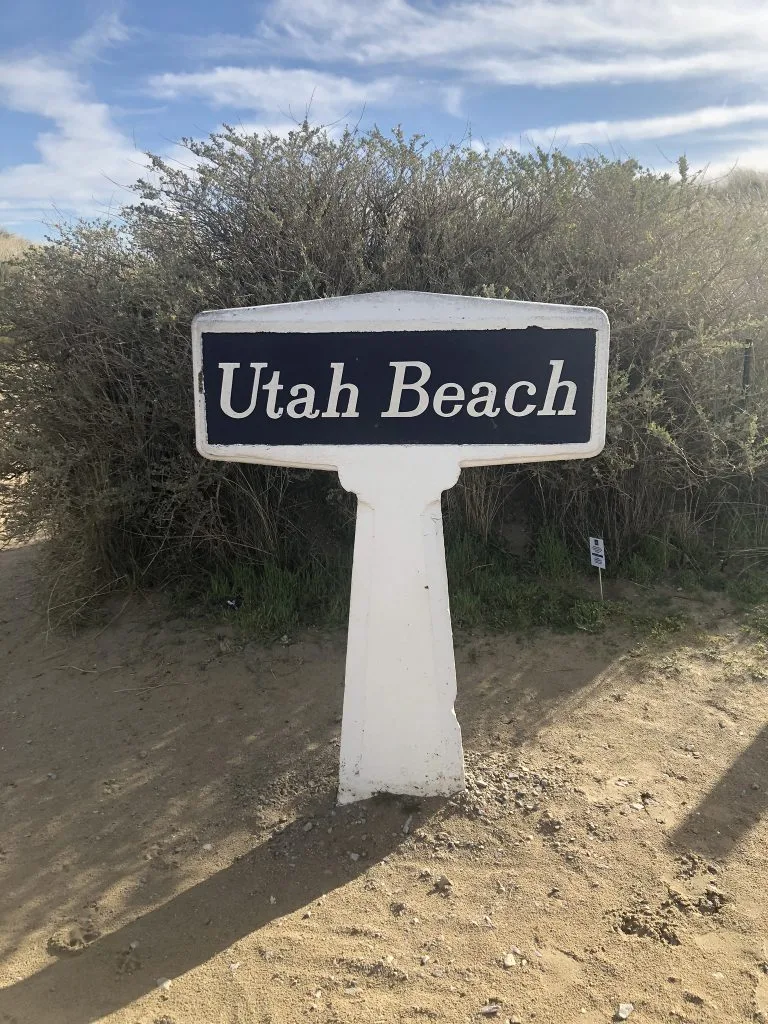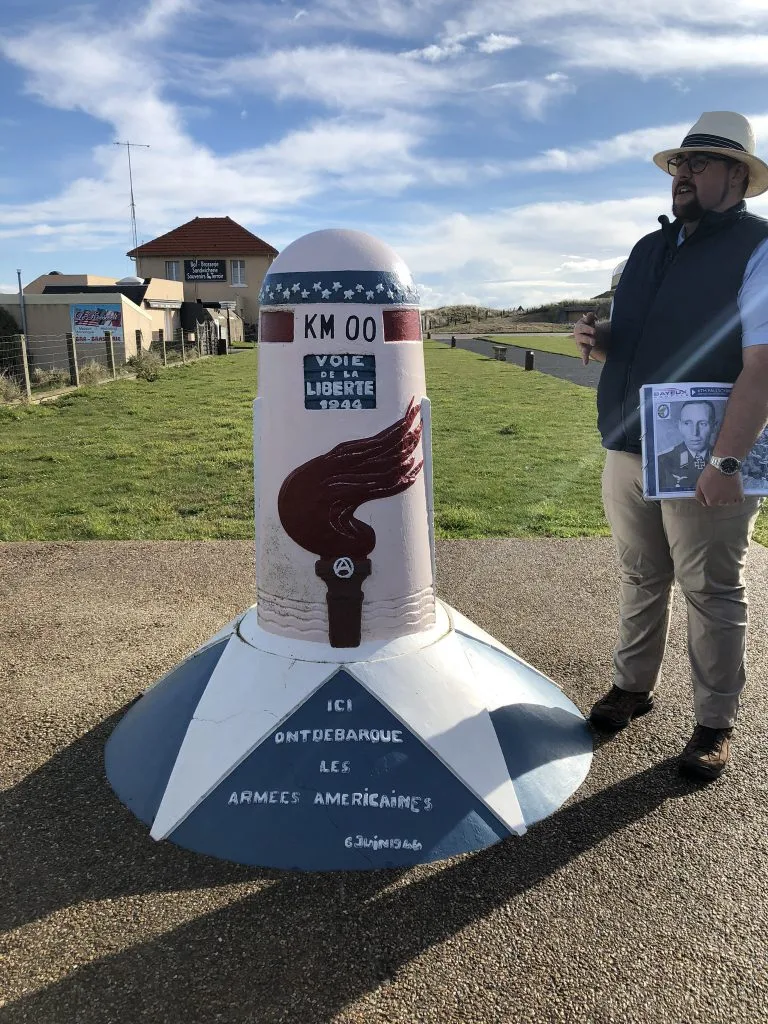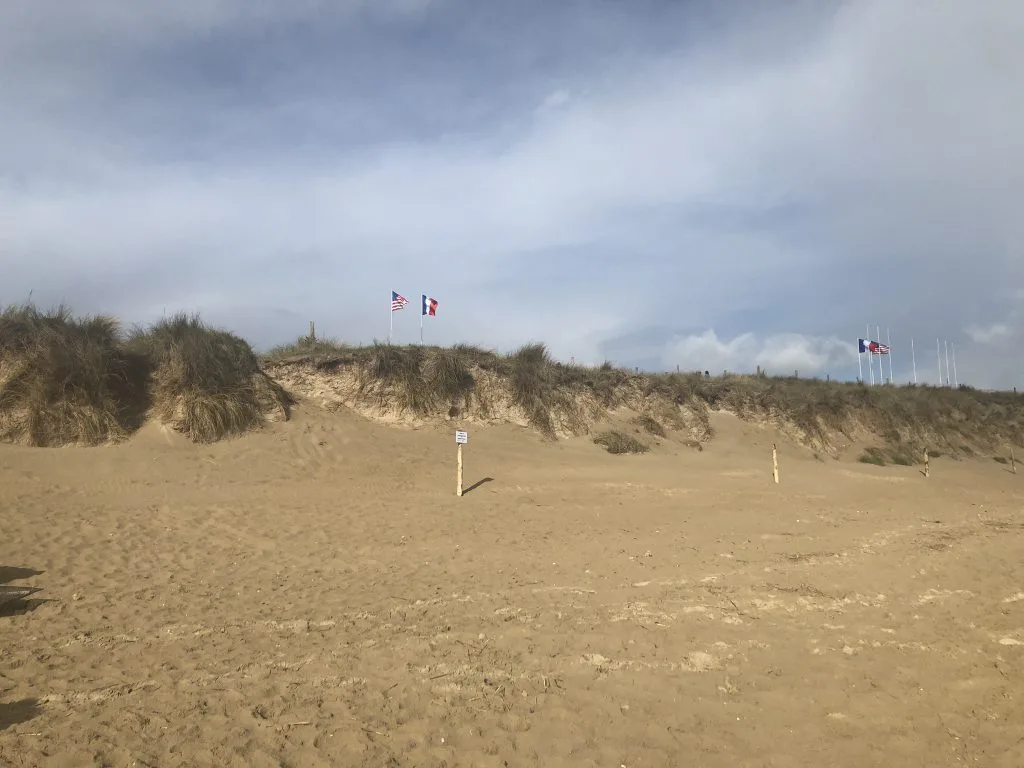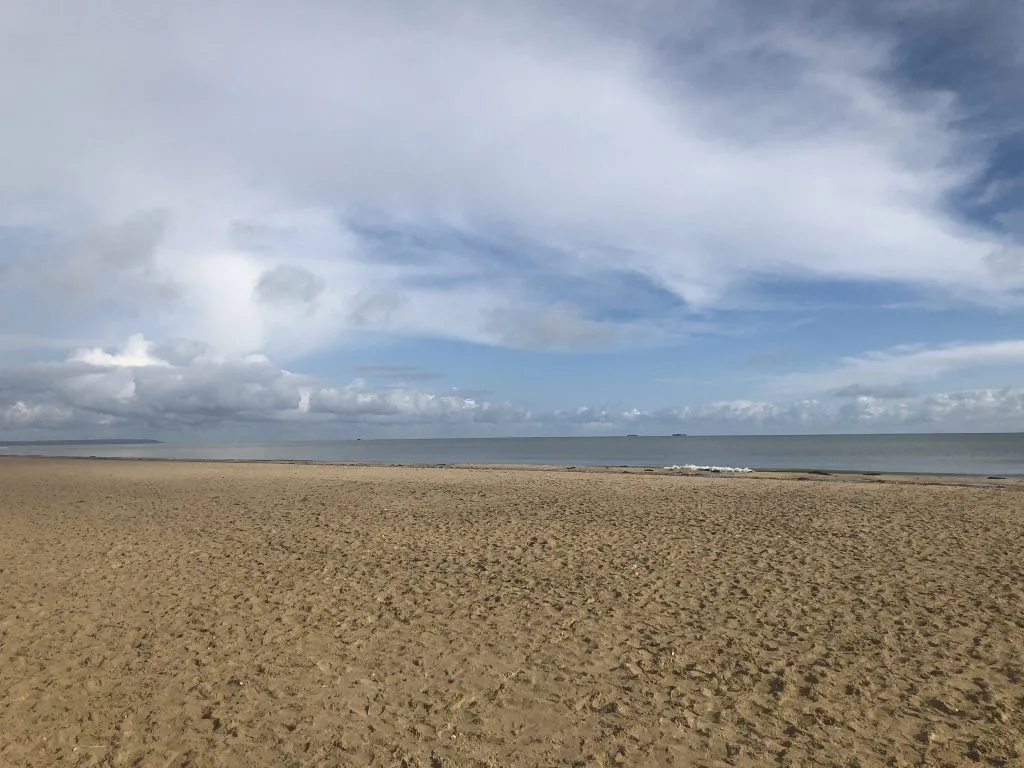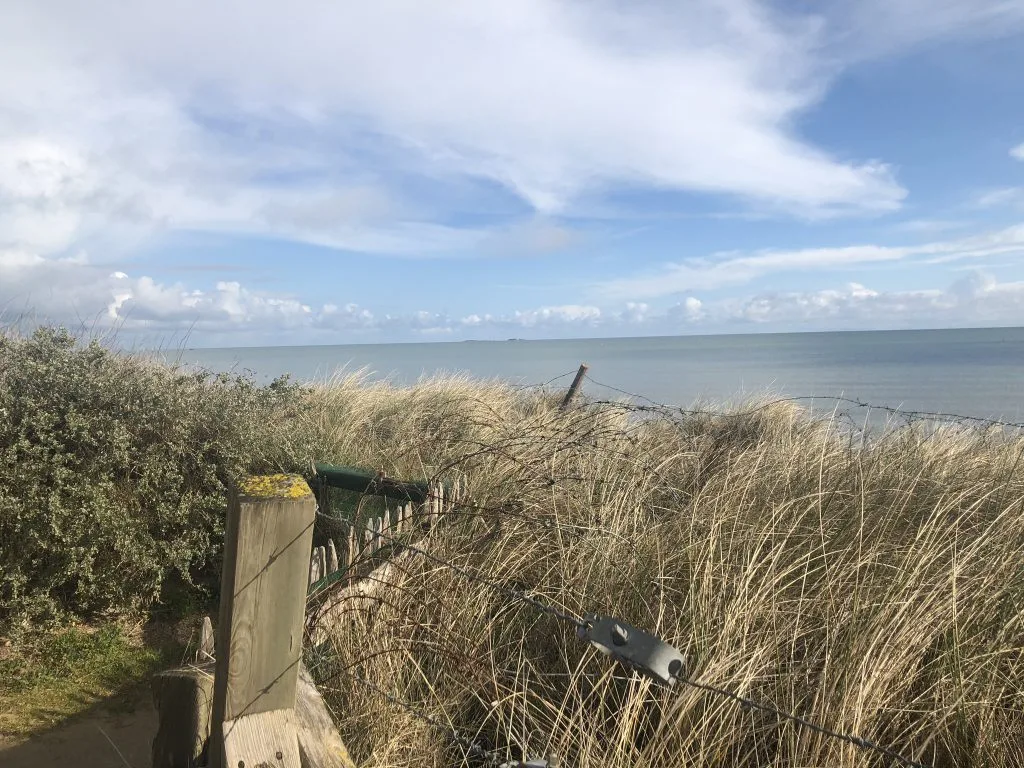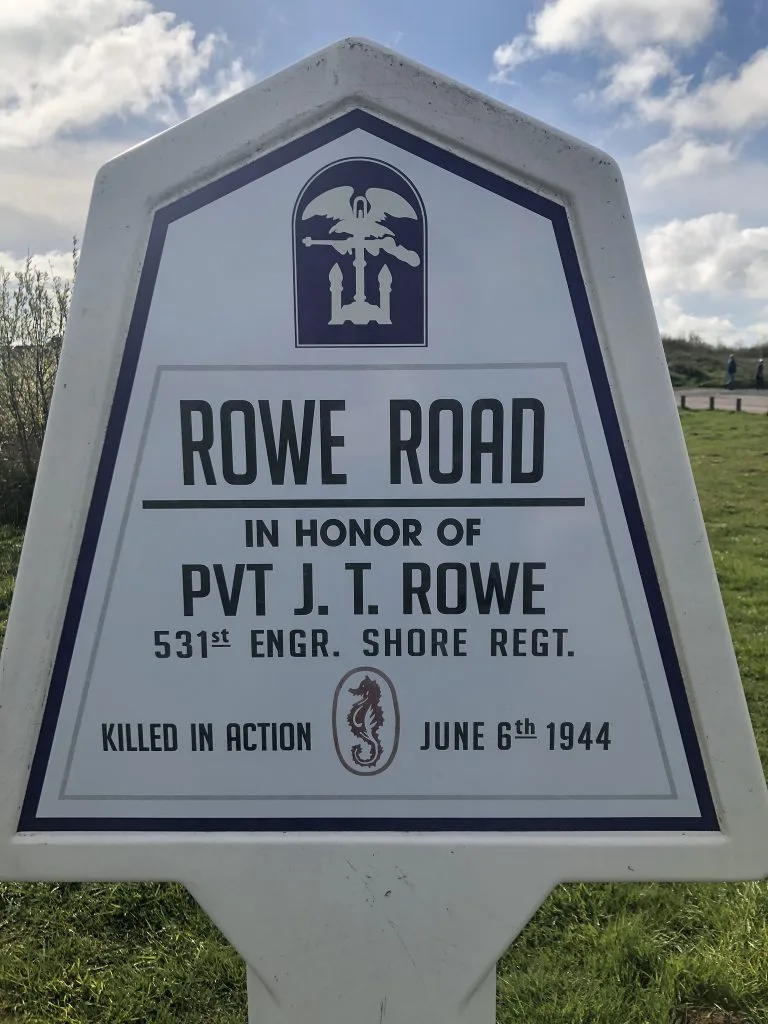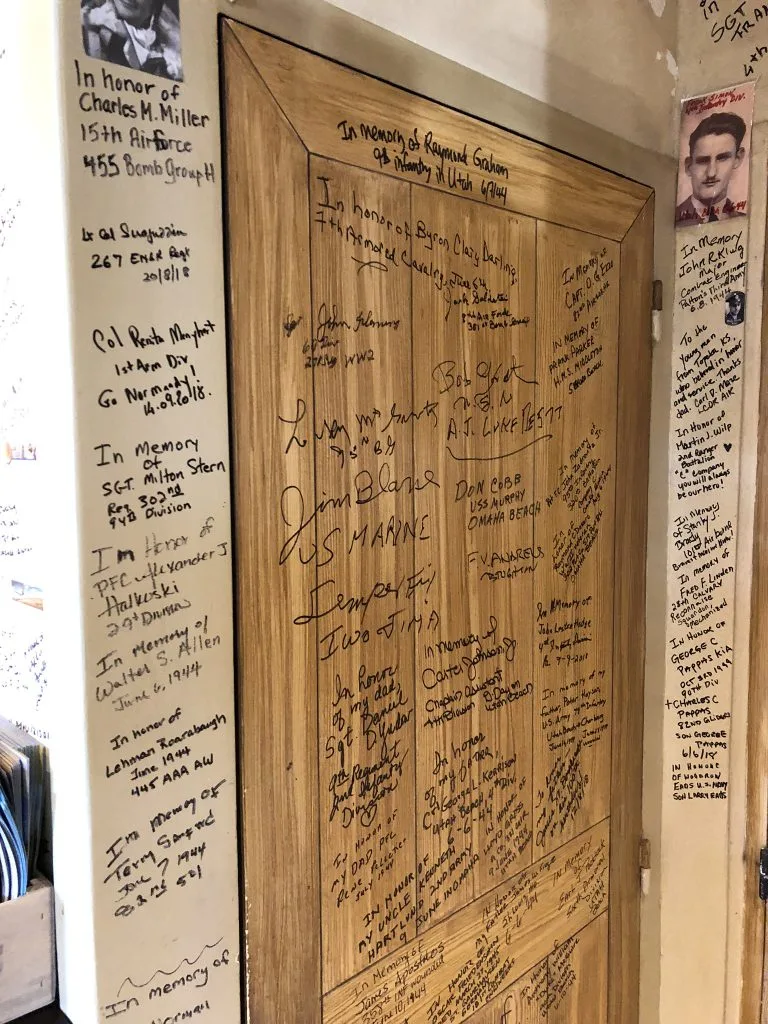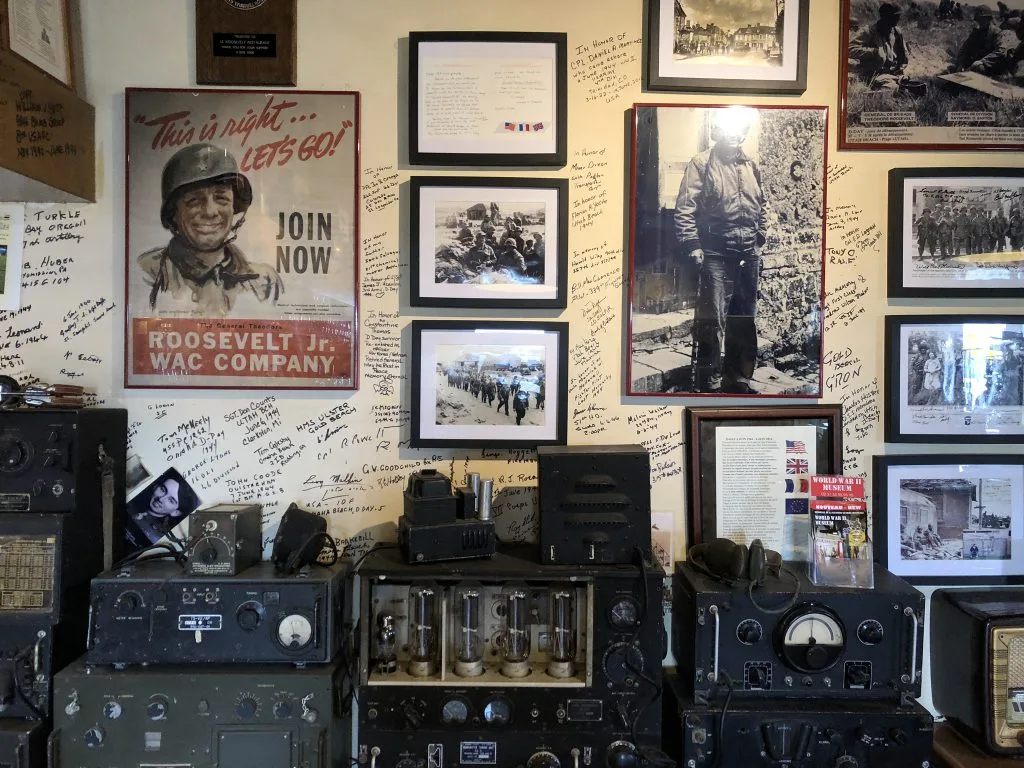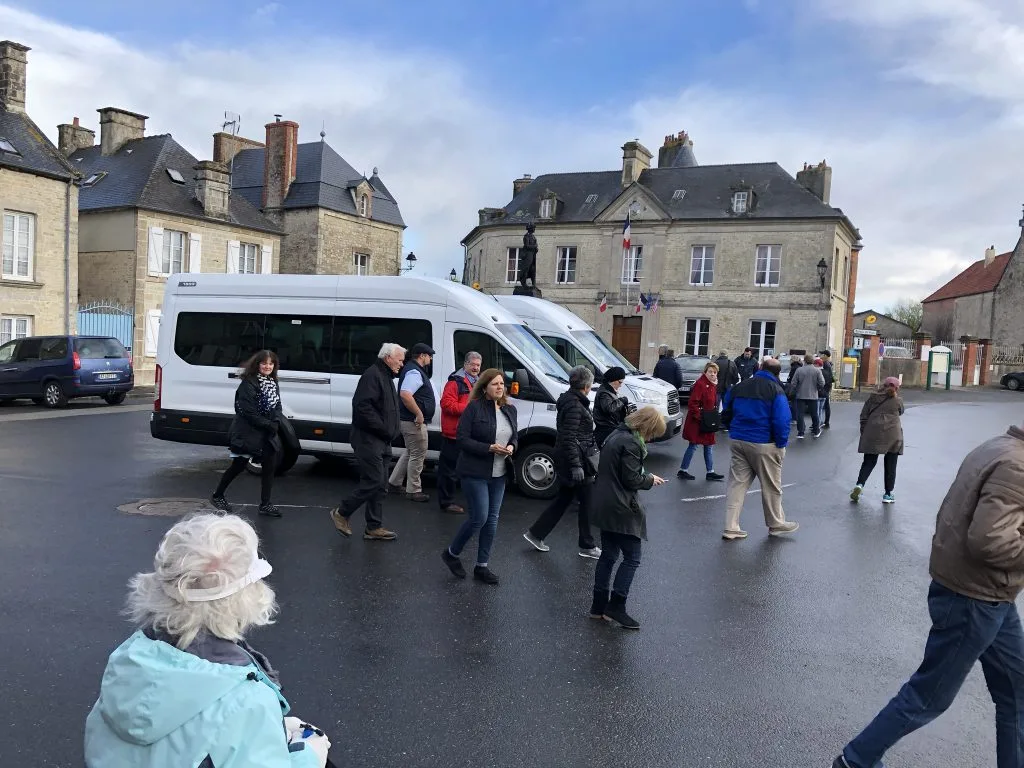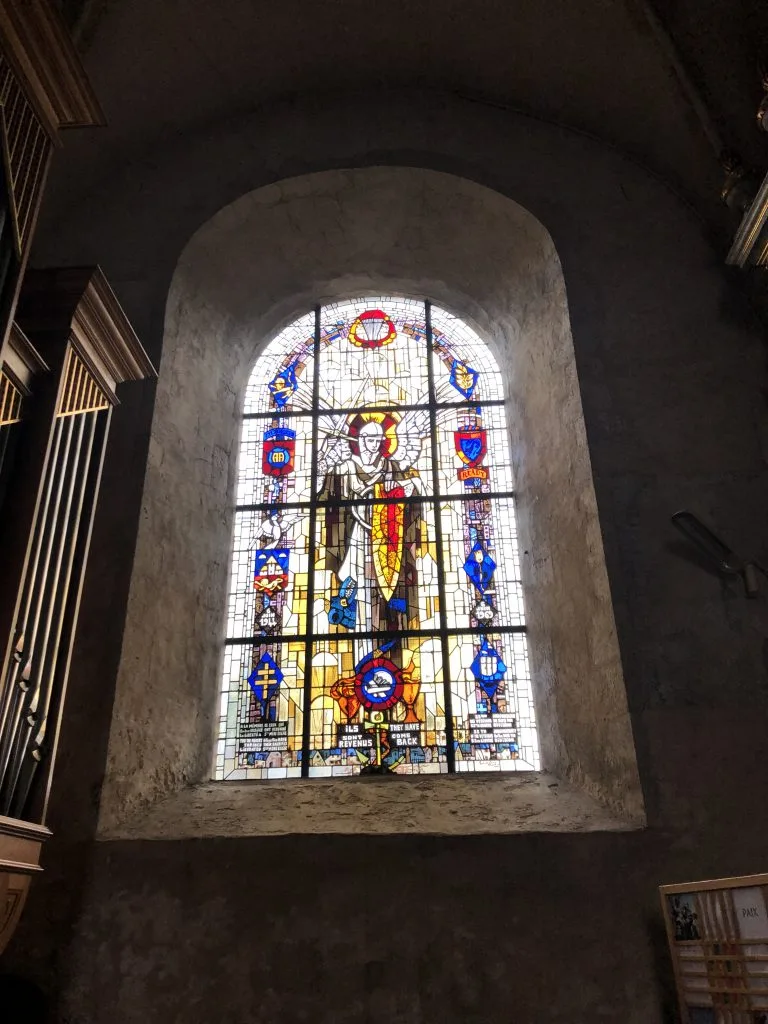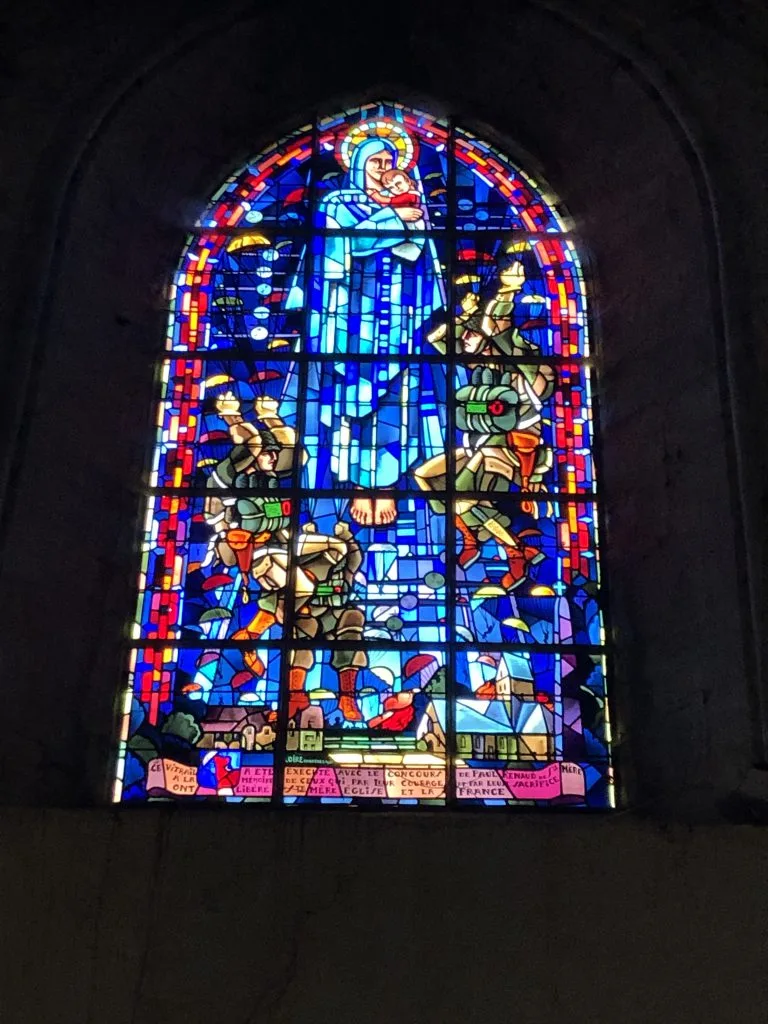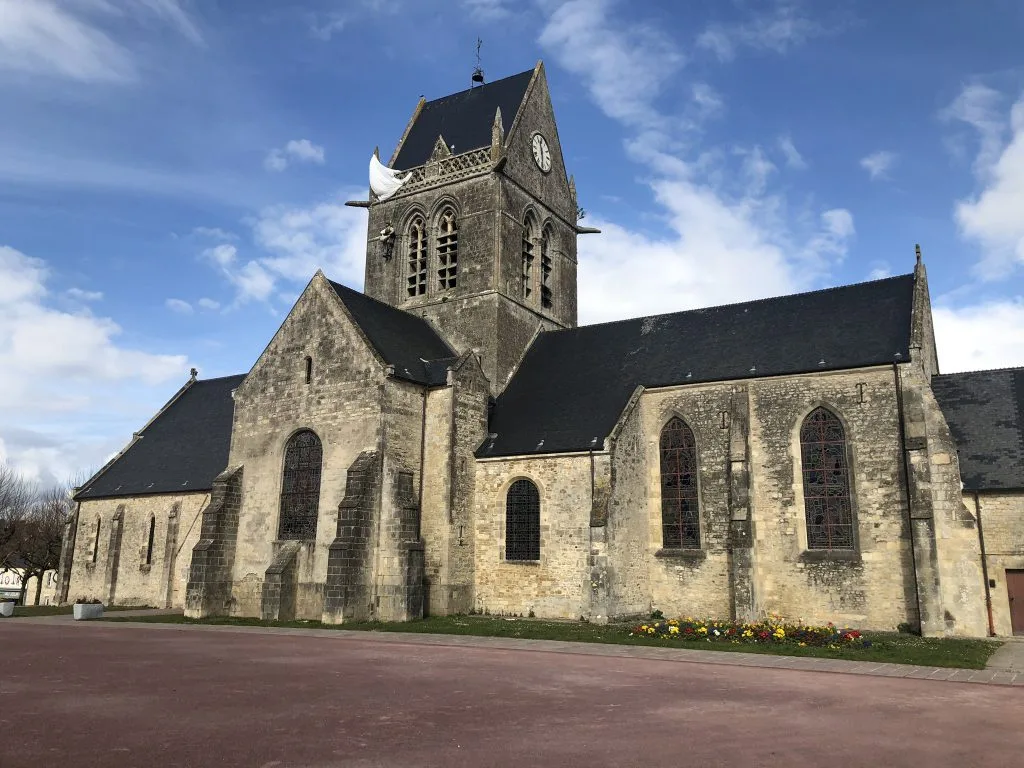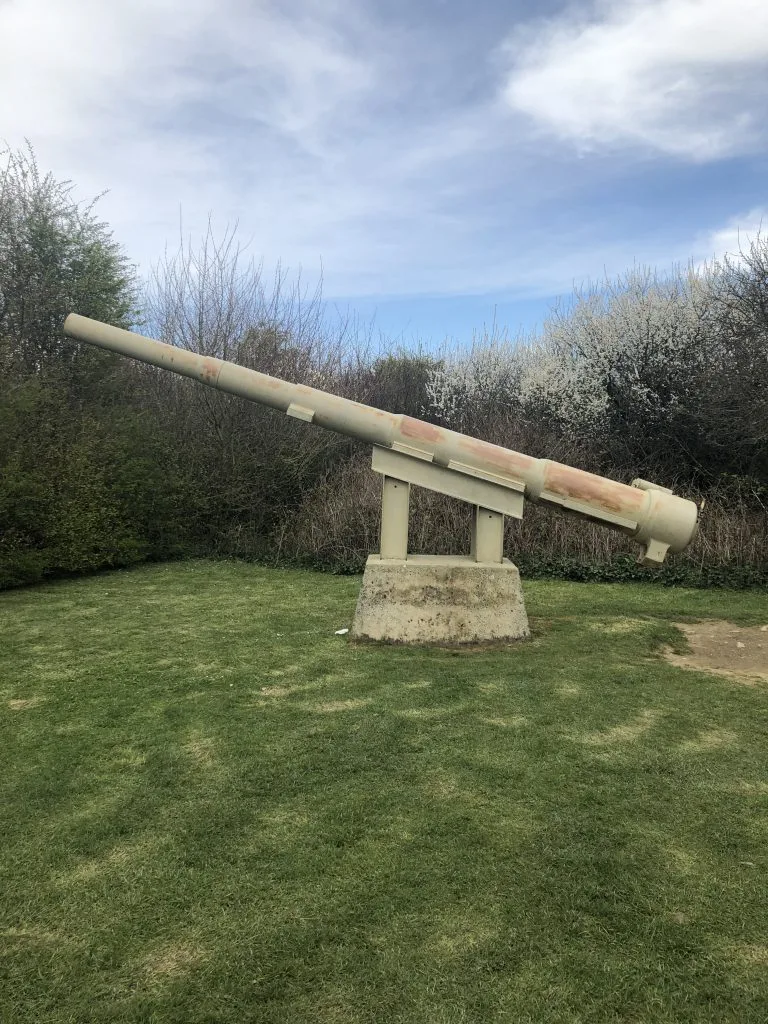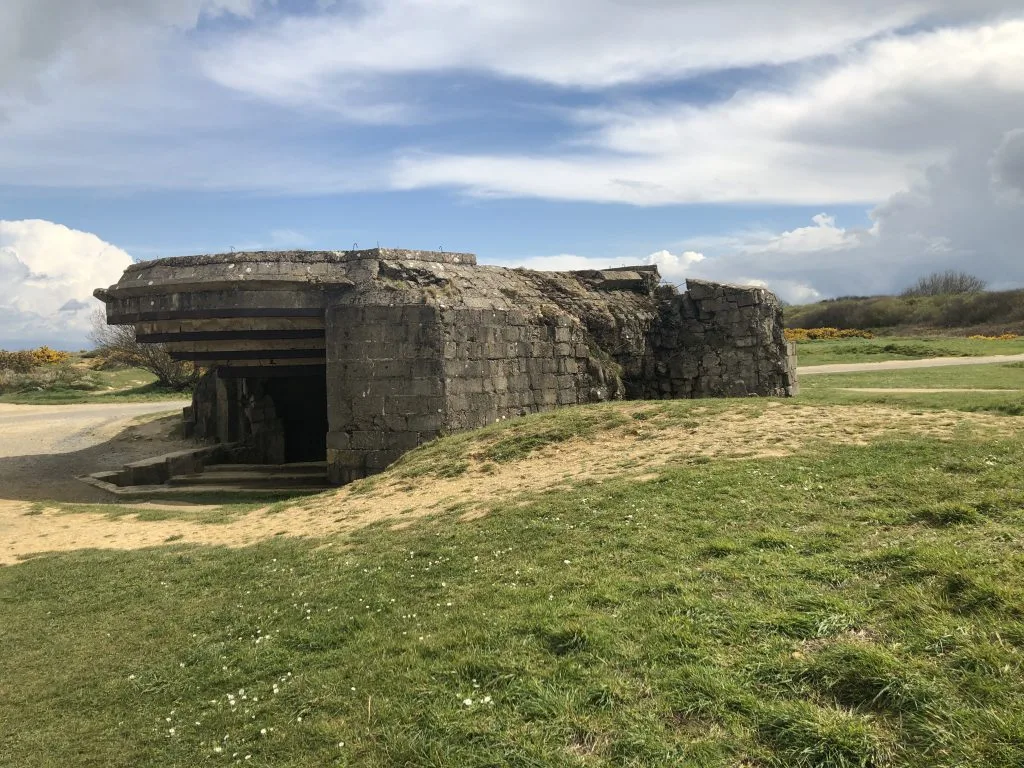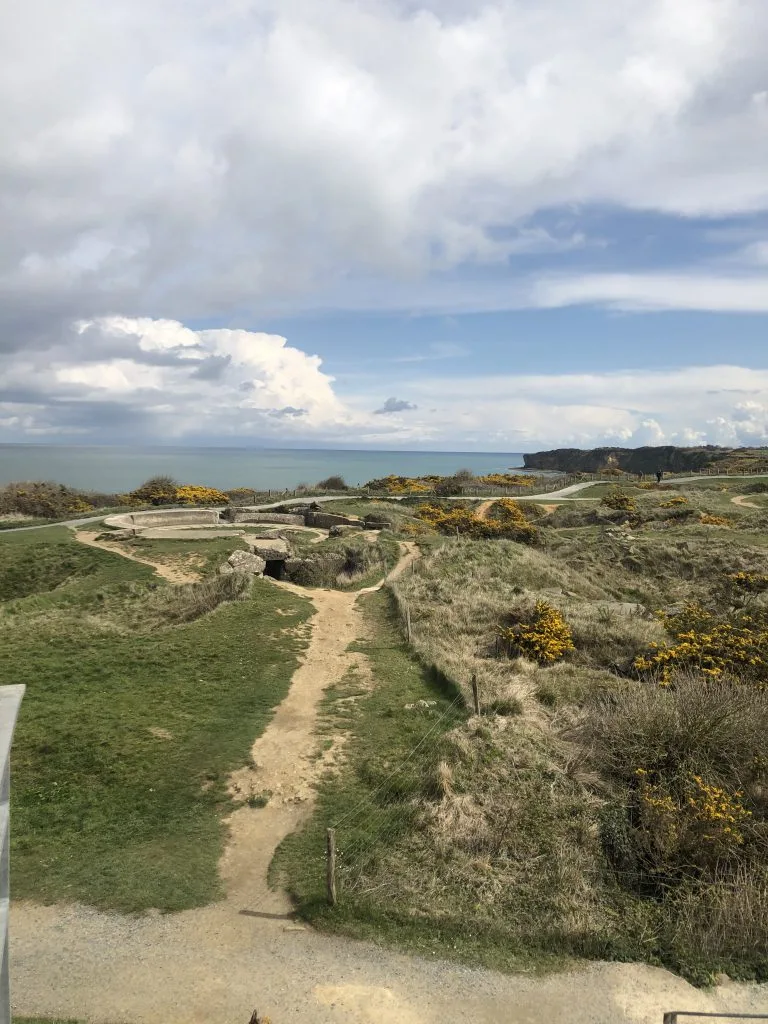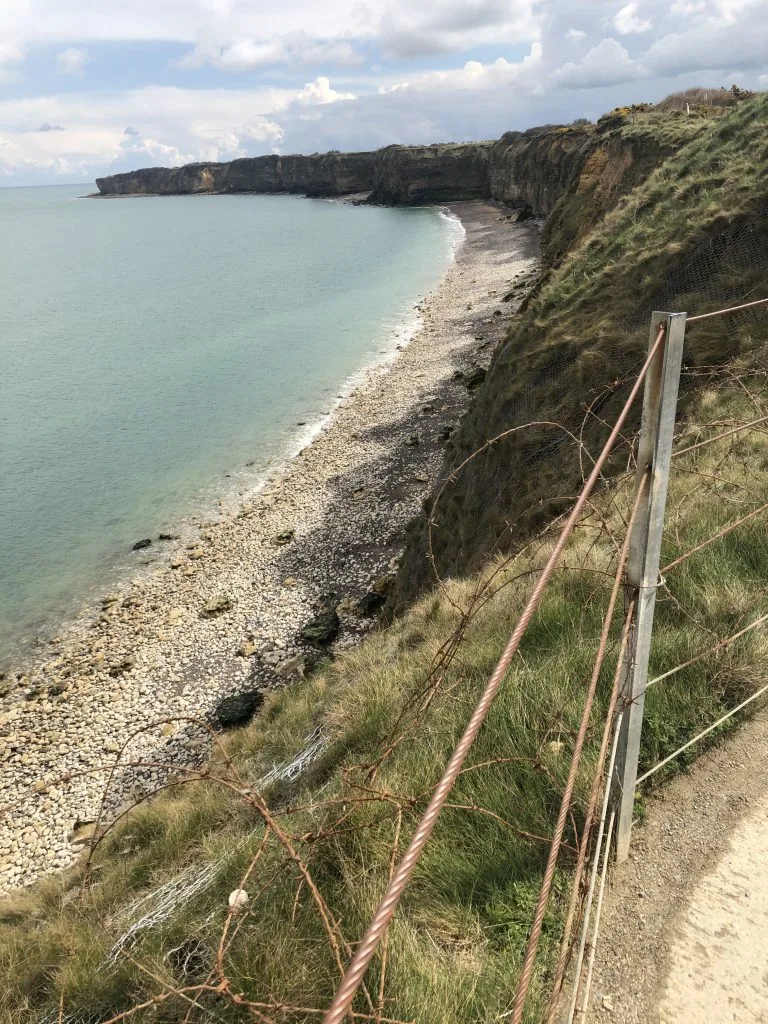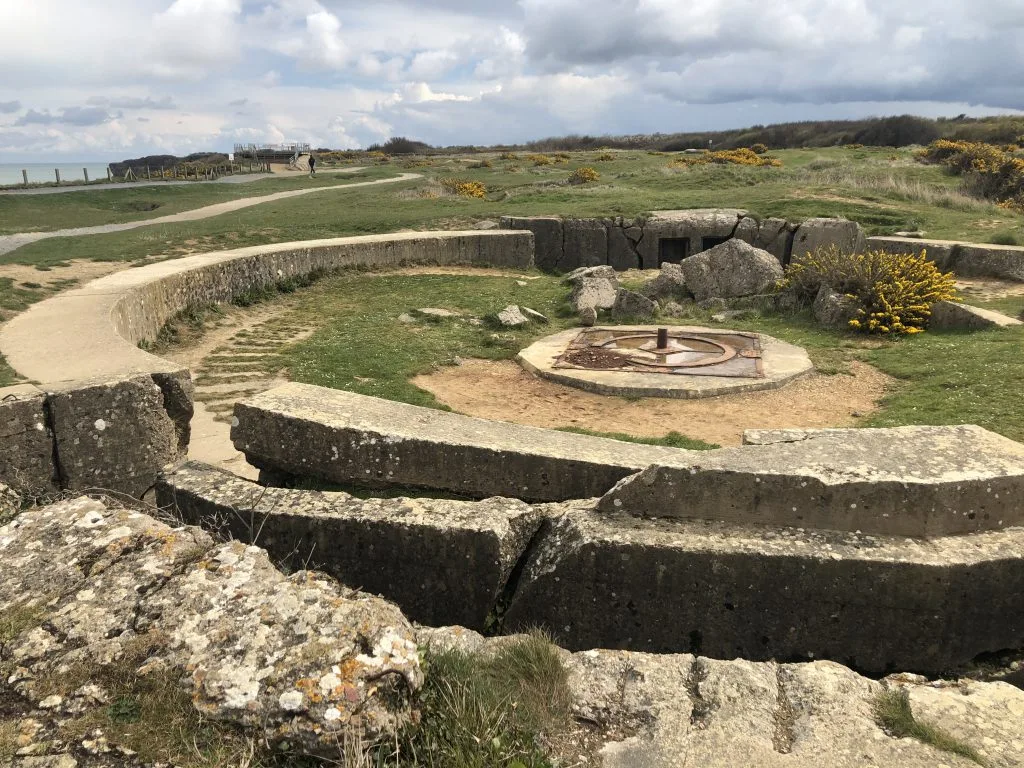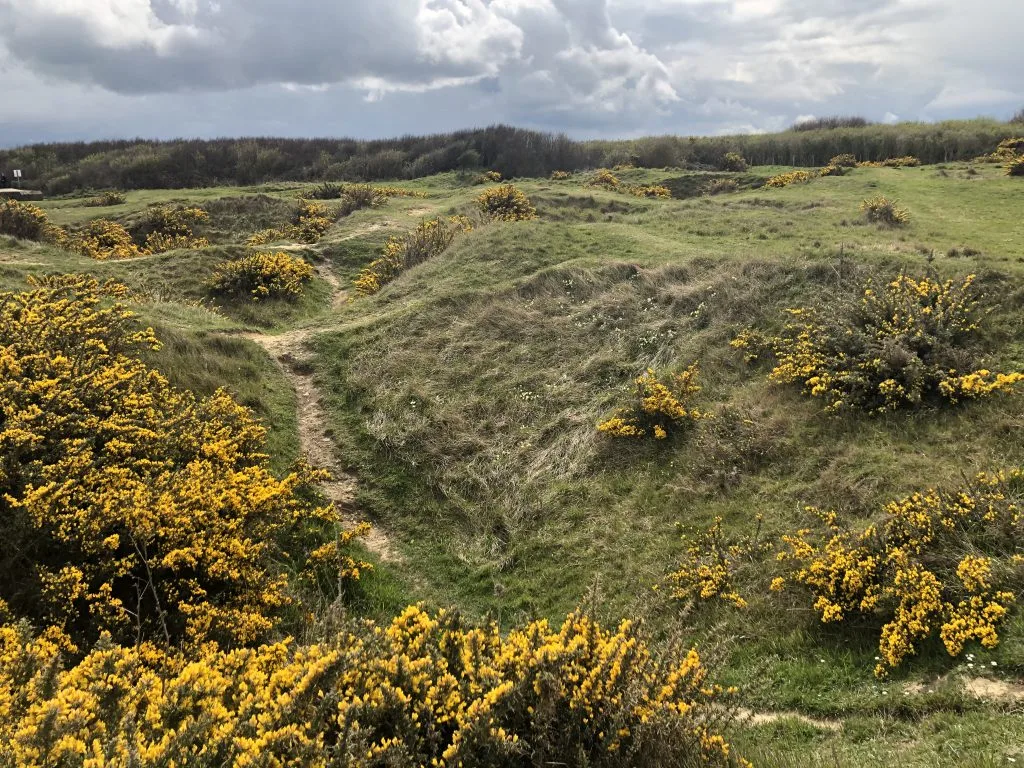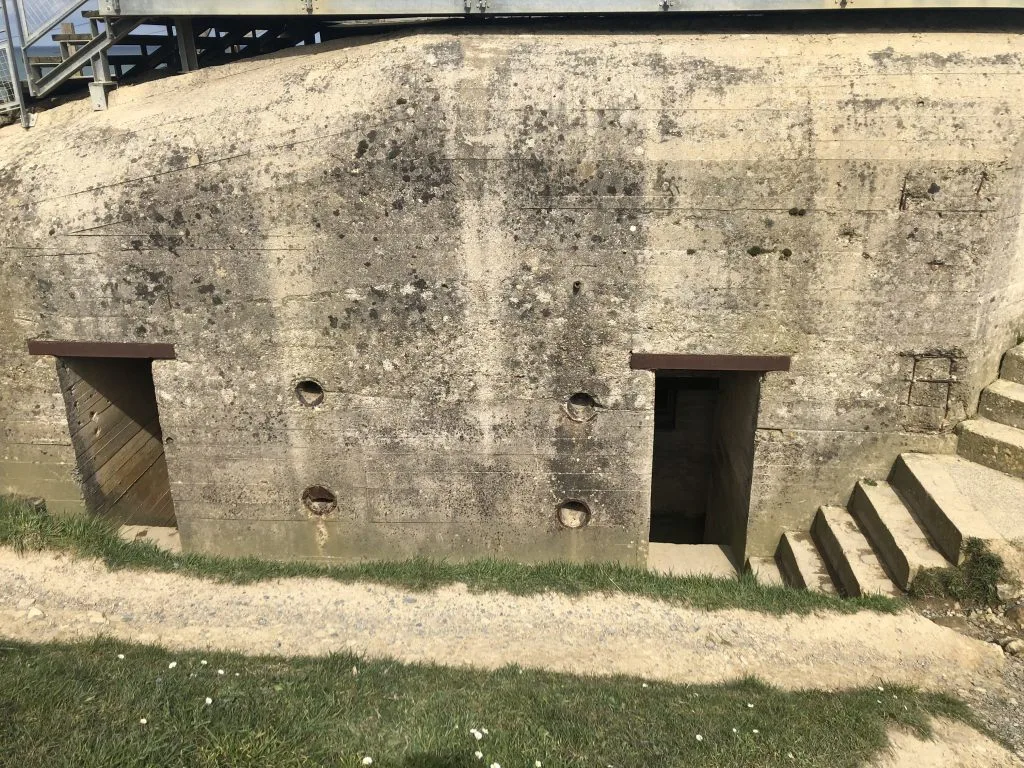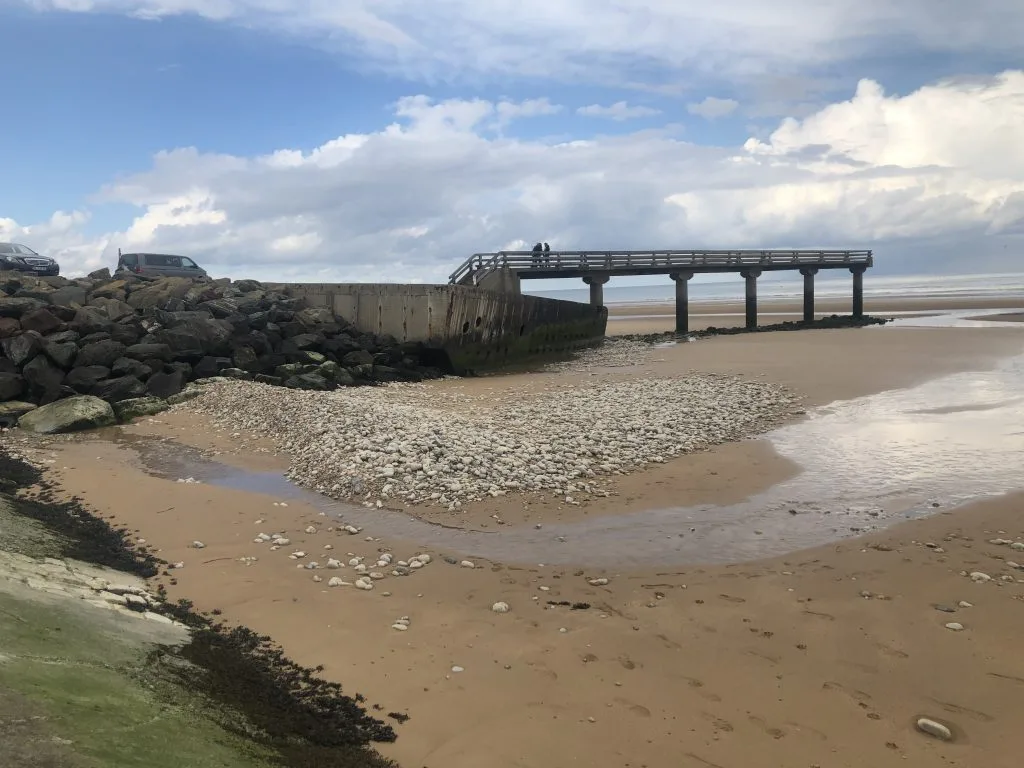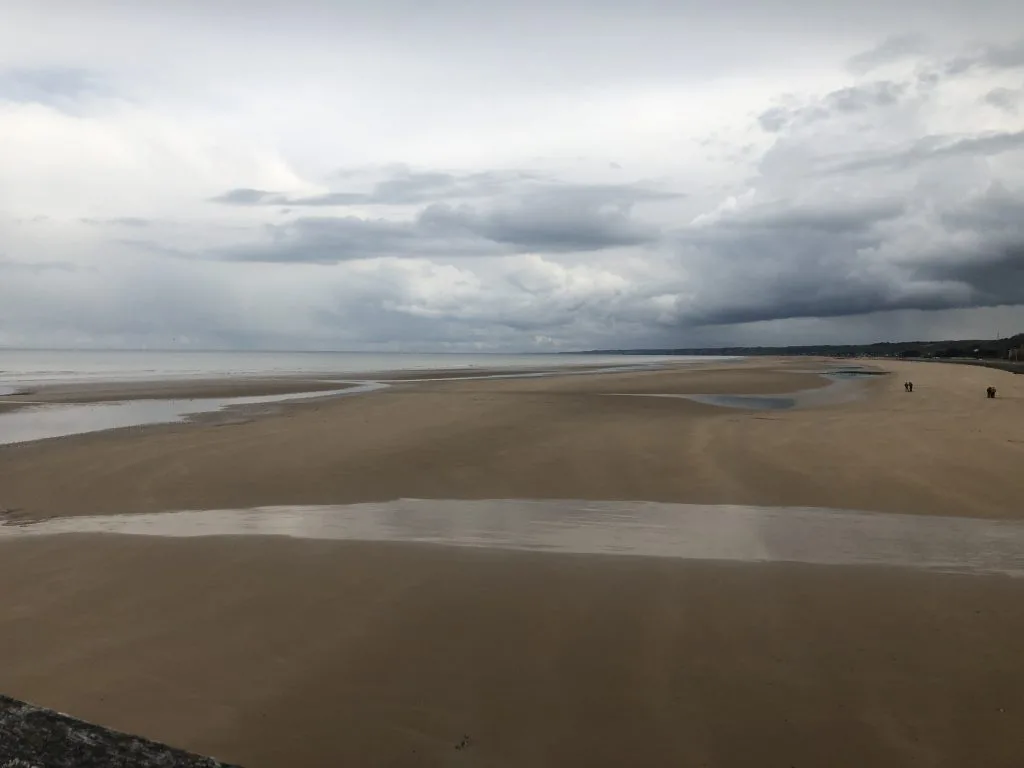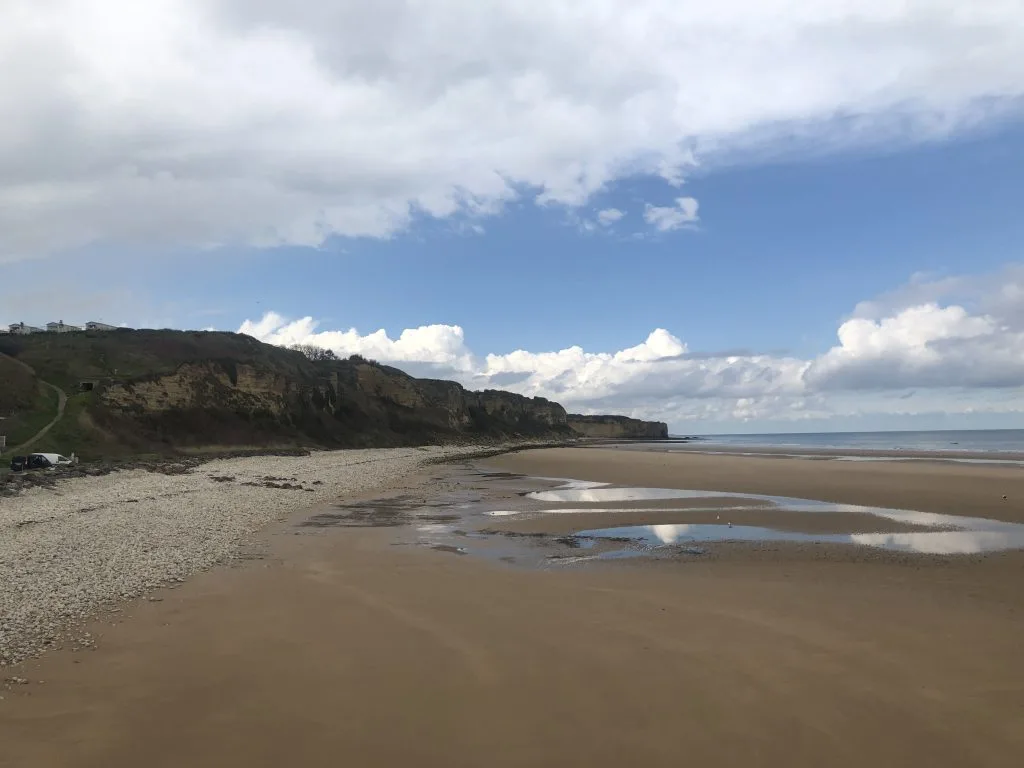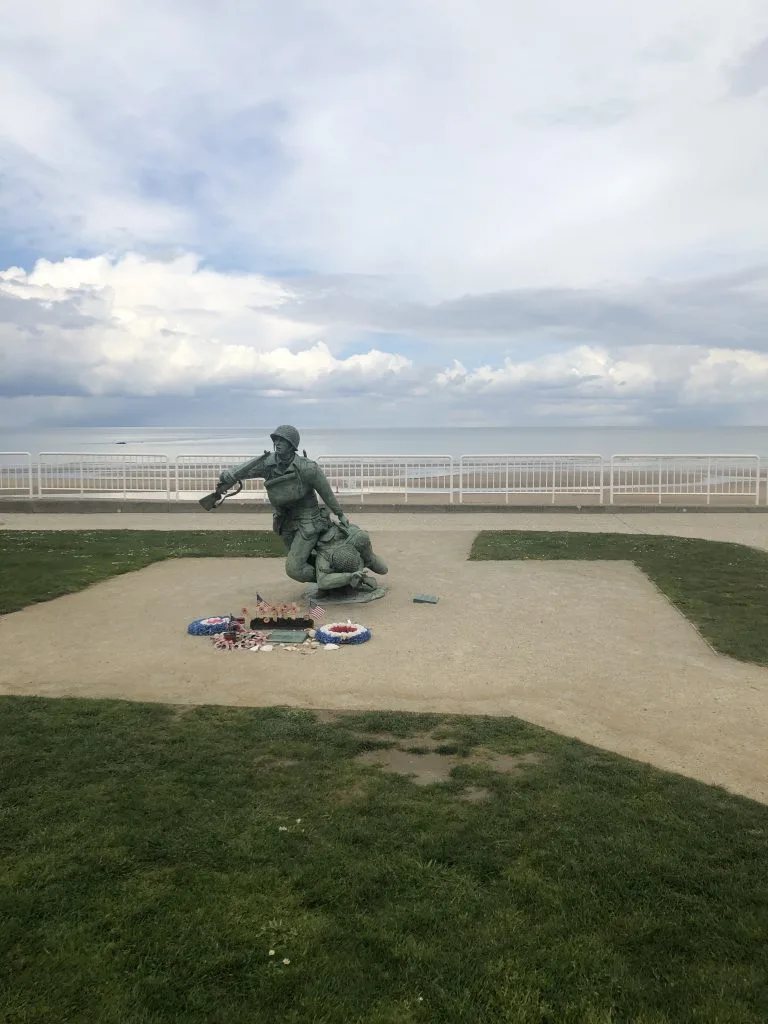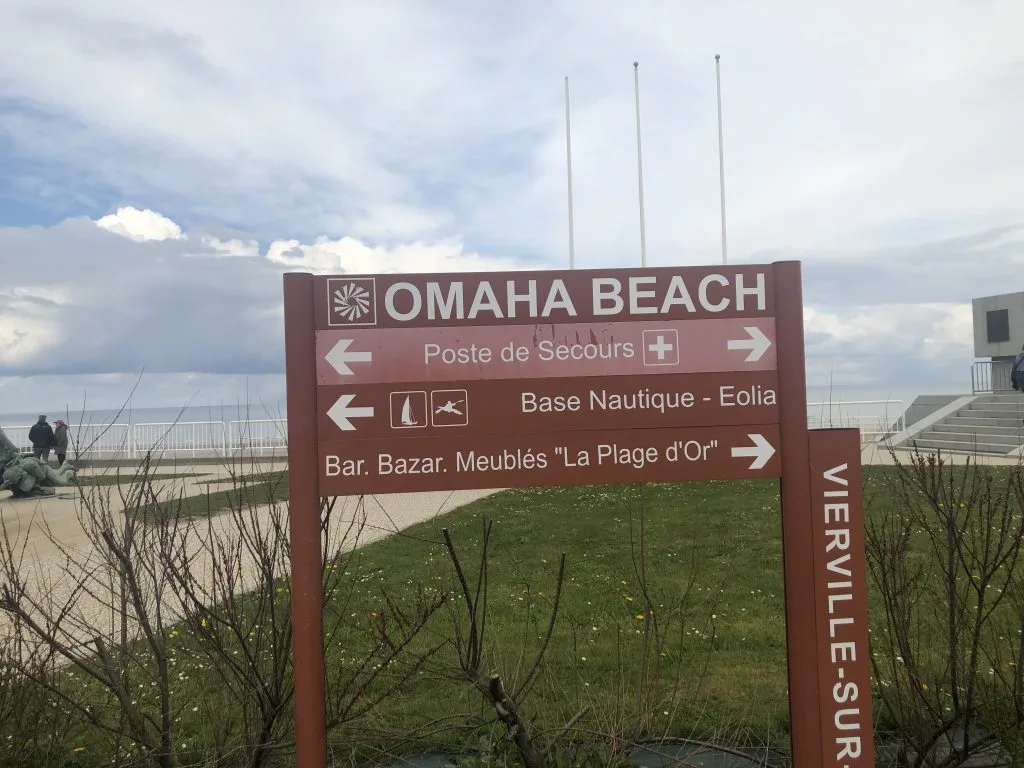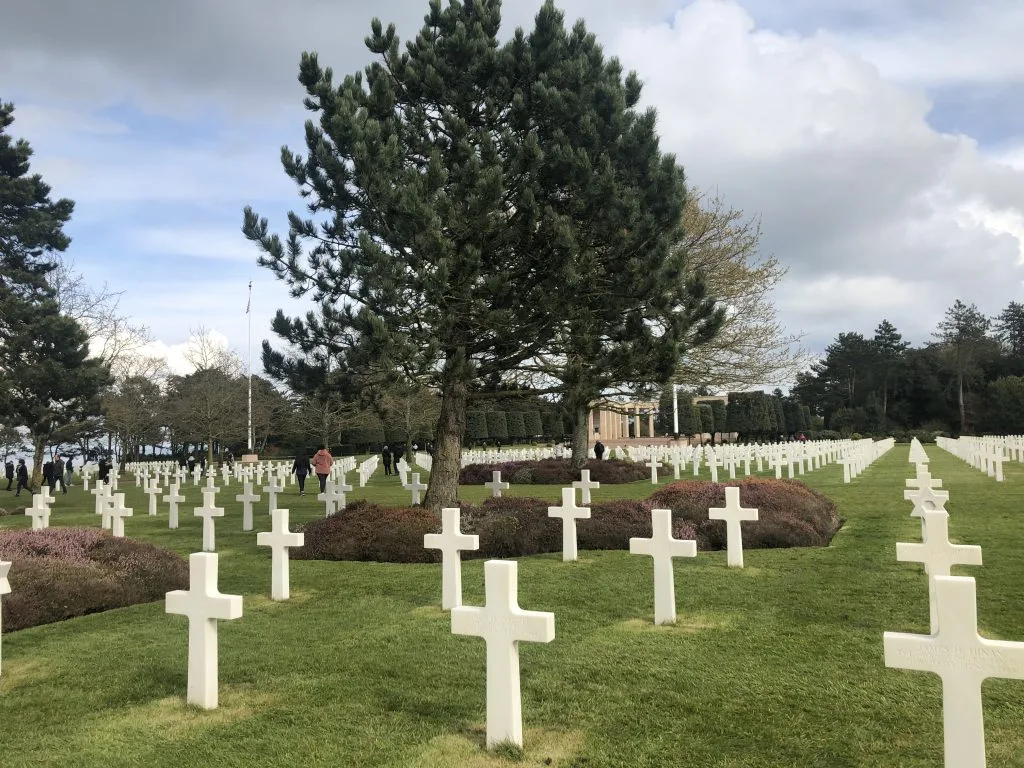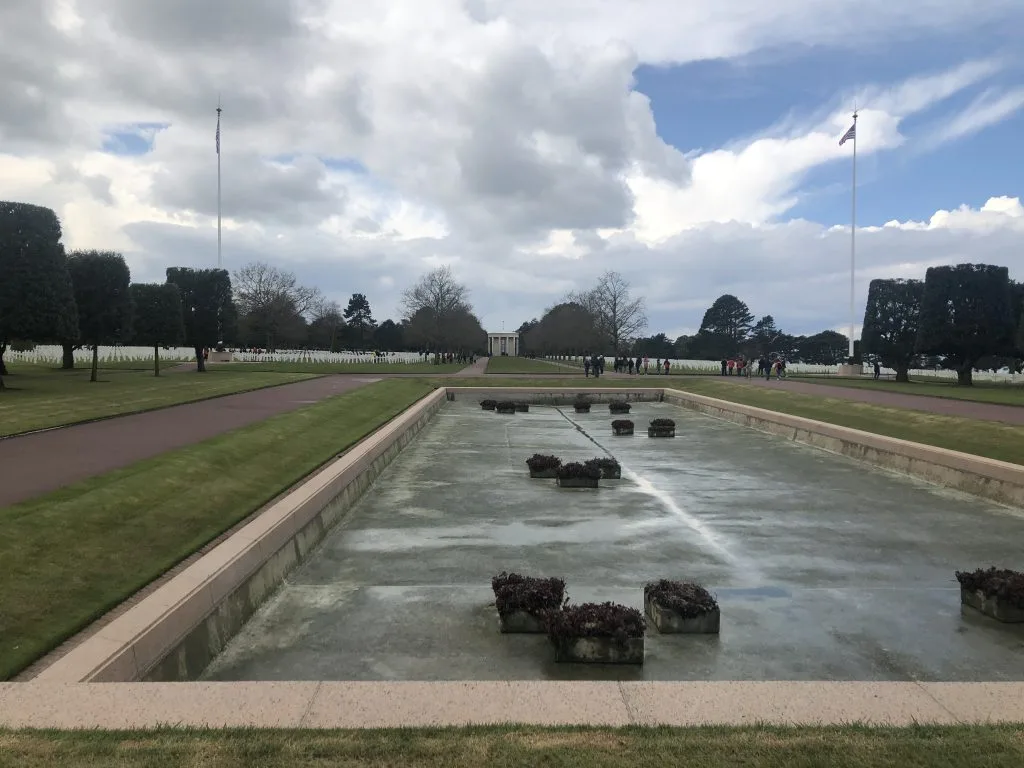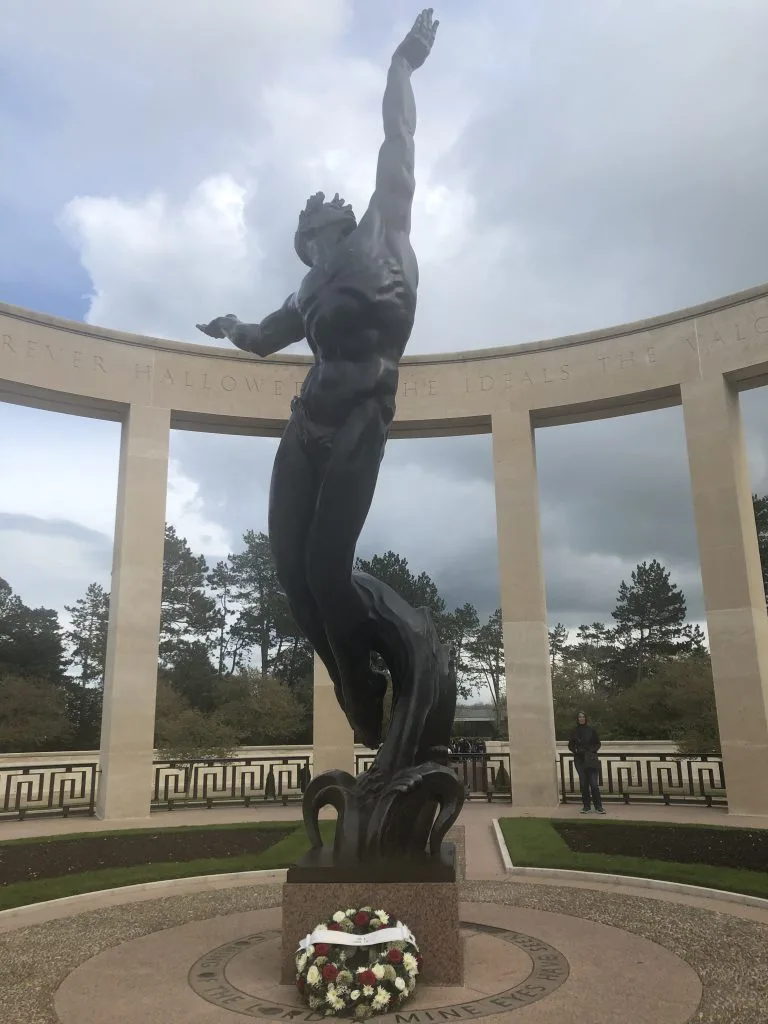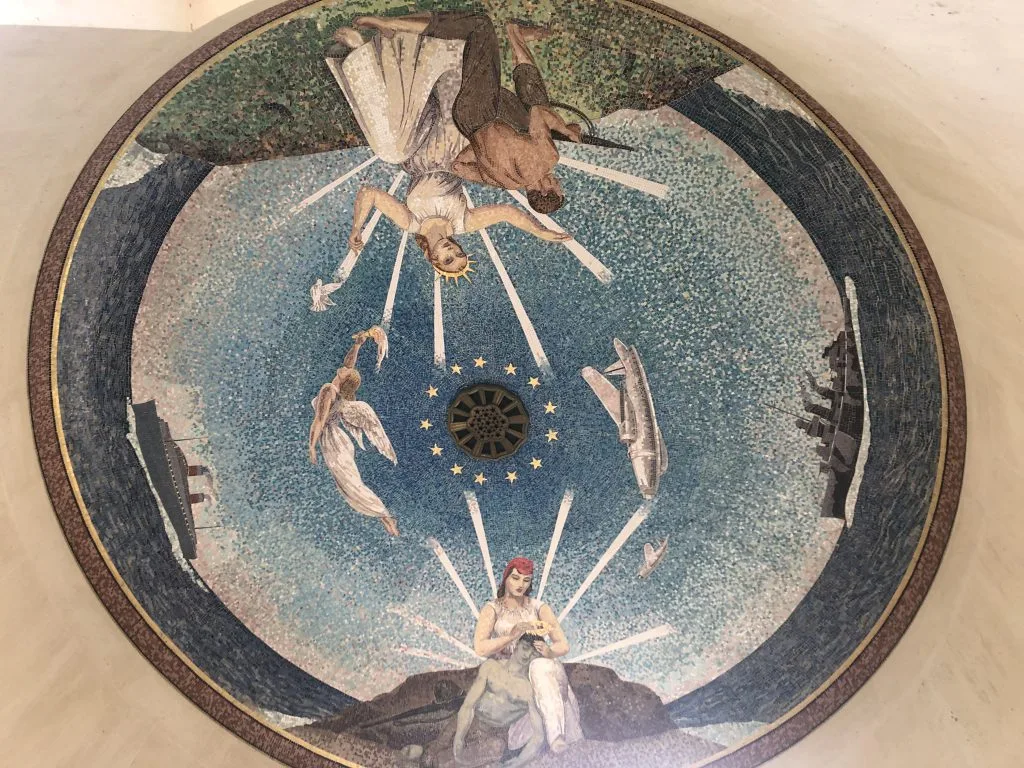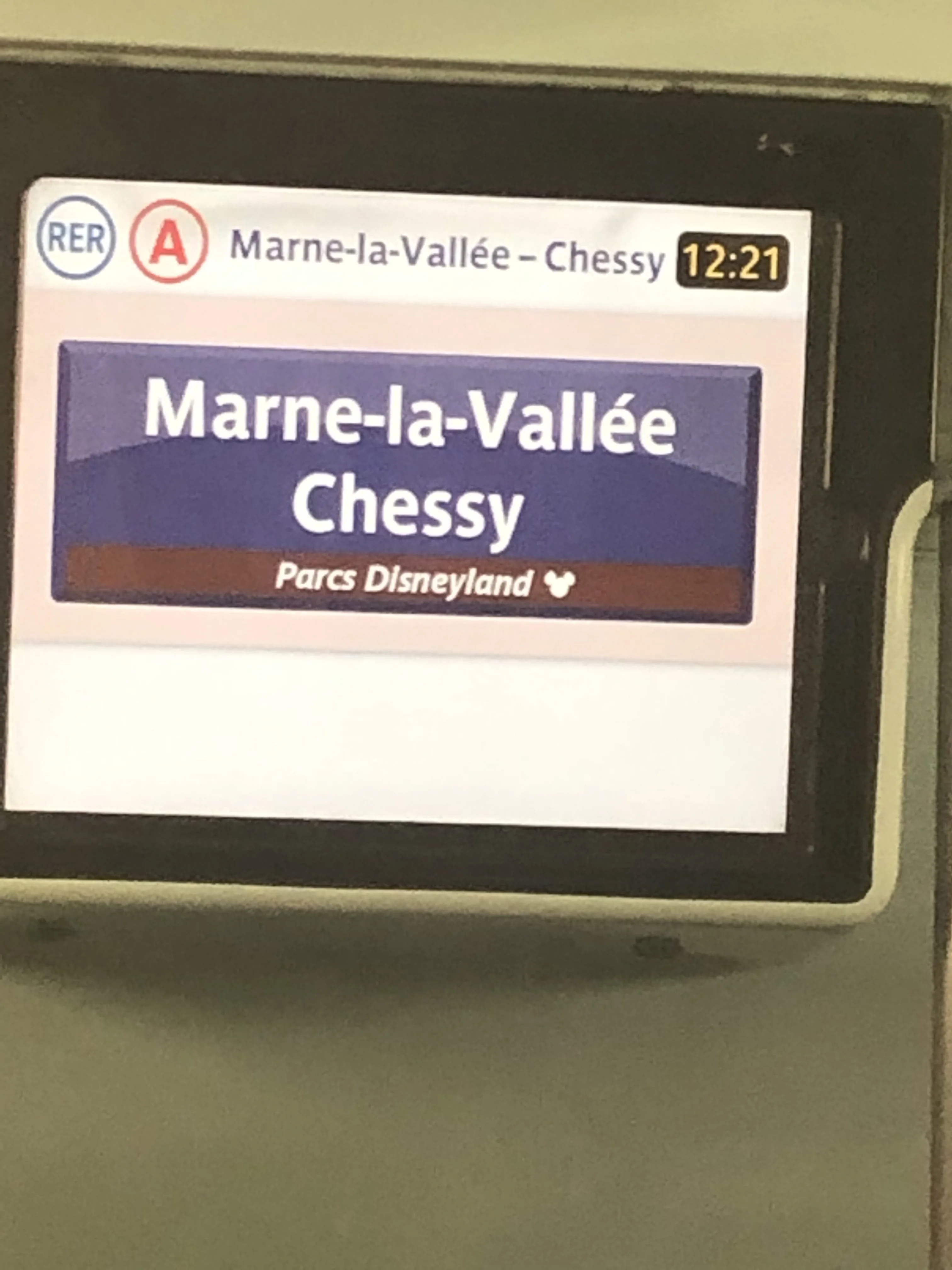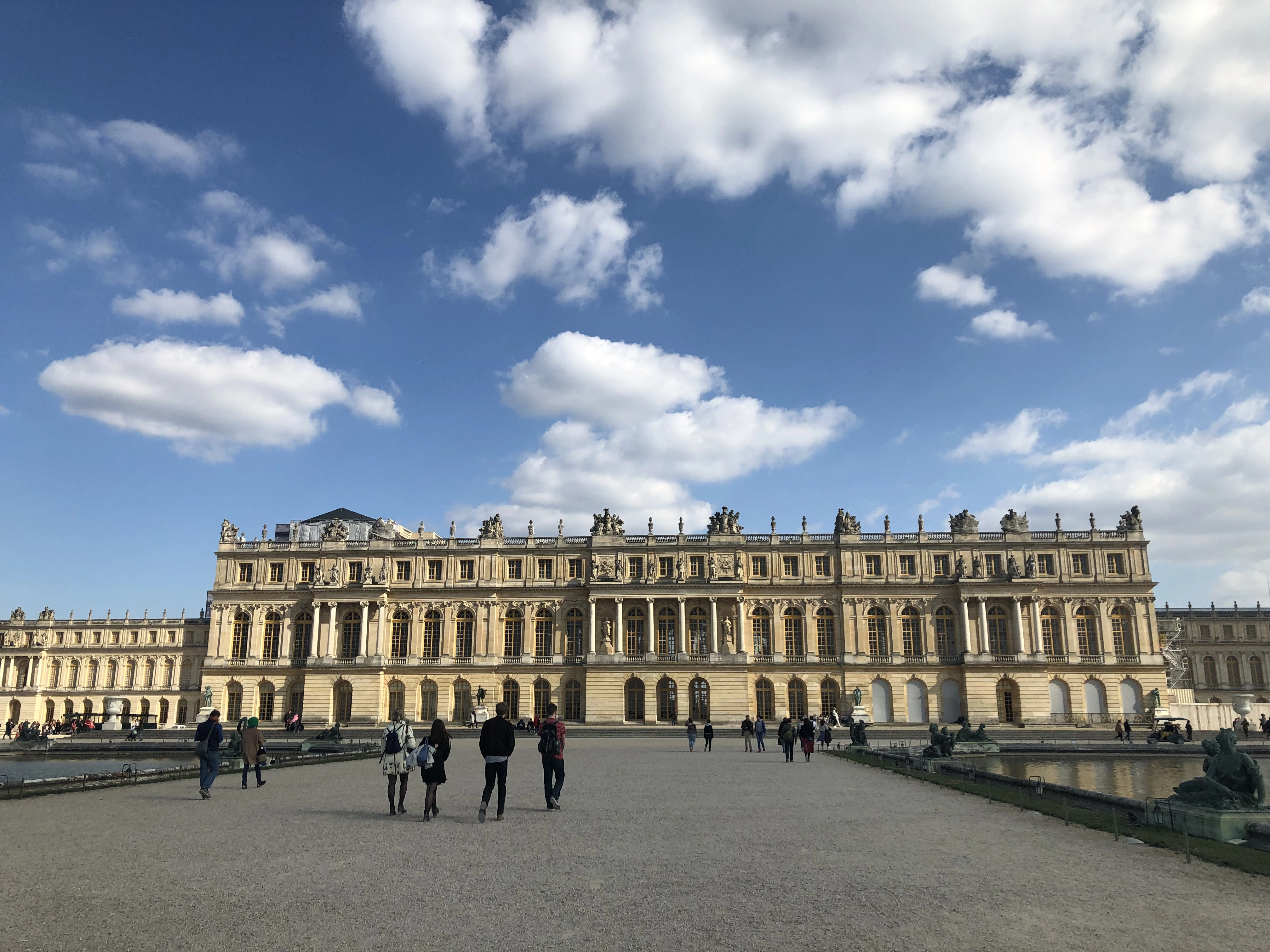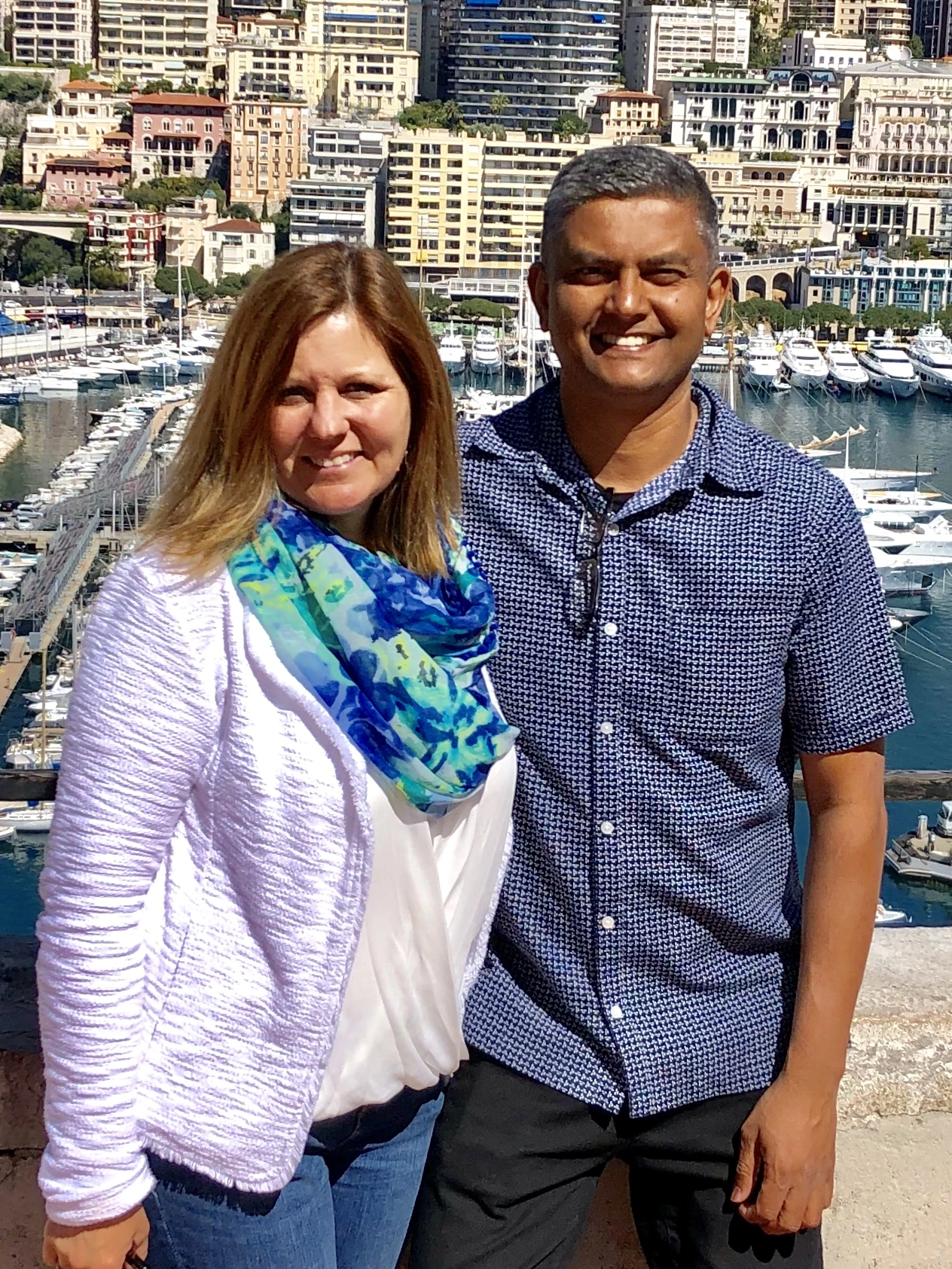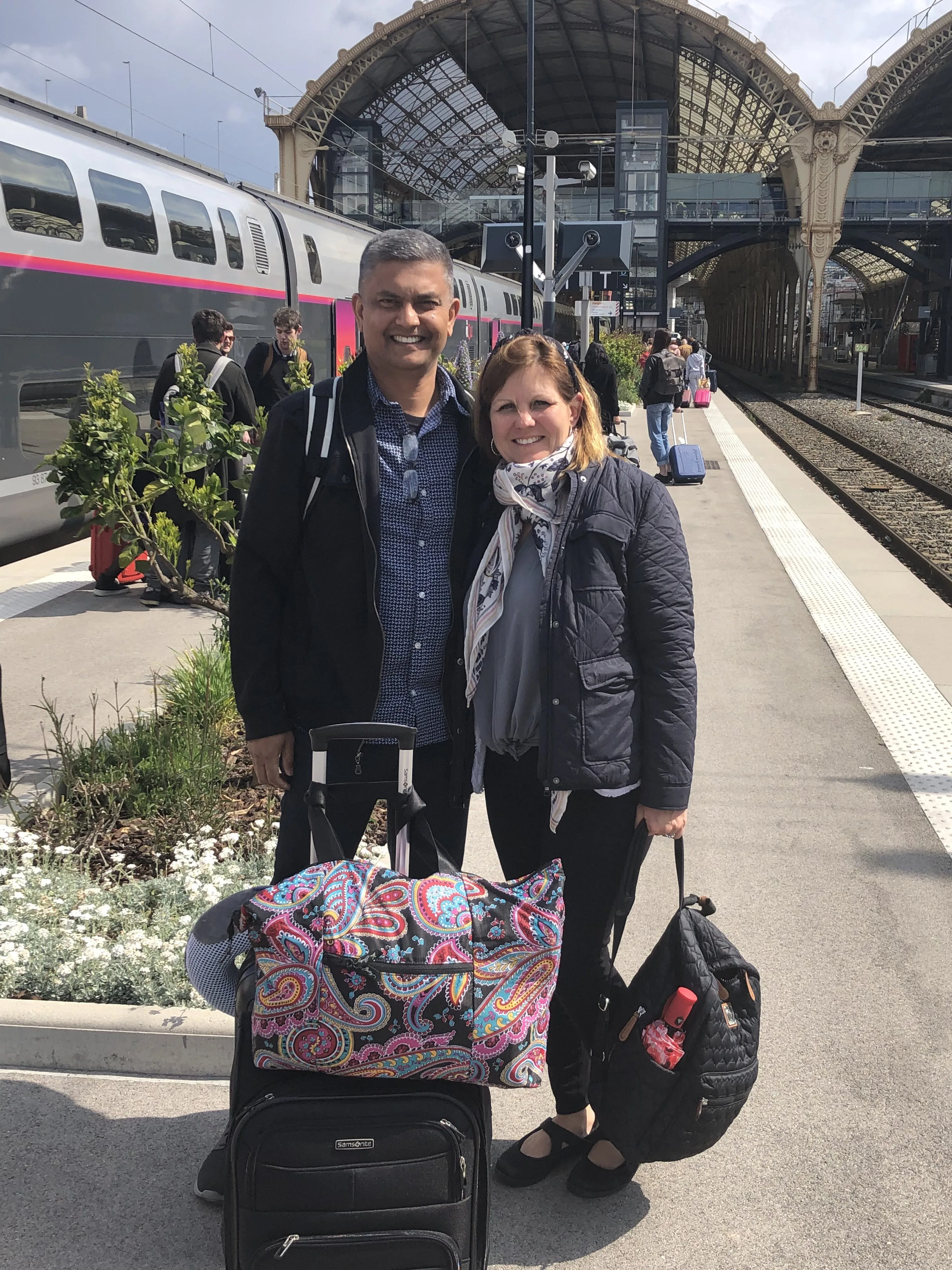Yesterday was our full day D-Day beaches and landings tour. We were with 12 other people in our tour group and we were the youngest by at least 20-30 years. Our tour guide was a Welshman who lived breathed and was completely passionate about WWII, making him the perfect guide.
We began our tour in a small town of Saint Mere. Where paratroopers landed in the early morning of June 6th. Taking the Germans who had control of this town by surprise. There were placards of heroism throughout the town square. The most interesting story was, two American paratroopers opened the door to the church, they heard footsteps. They went inside and noticed the Germans were hiding in the confession booths and shot through the paneling killing them inside. The holes are still there.
The next stop was Utah Beach which was controlled by 75 German troops. Famous for its landings by sea. Standing there on the sand it was not hard to picture the morning of the 6th and the hundreds of men who landed 400-600 yards out because of the tide. Then they had to run up and take cover. They were able to take this stronghold quickly because there weren’t that many German soldiers stationed there. A cafe is located across the street of the beach where the Americans went to celebrate and they signed their names on the walls, ceiling and tables. Over the years when the veterans return they have pictures and more signatures around the bar area.
We then went to Saint Mere Englise, made famous by the 1960’s movie The Longest Day, about a paratrooper who was stuck by his parachute on th church steeple and over the course of the night he was taken as a POW. The town has since then become famous. It was also the first town liberated on June 6th by the allies. FUN FACT: the stained glass windows of the church were all destroyed during WWII. When they went to replace them they had paratroopers added to them.
After lunch we made our way to Pointe de Hoc. This was a stronghold held by 250+ Germans. And it has 90-foot cliffs that the allies had to climb up to capture it. A few months before June 6th we began dropping 10,000 pounds of bombs on the area. The ground is still riddled with the aftermath of these bombings with huge holes and large concrete blocks from their barracks thrown about.
Our next stop was Omaha Beach. The most famous landing sights. This had both 400-600 yards of land the soldiers had to cross and 90 foot cliffs where the Germans were shooting at them. It had the most casualties too because of these two factors. Standing on the beach it was very surreal. Today it’s a famous sunbathing beach during the summer homes and there were many summer homes over looking the beach.
Our final stop was the American cemetery where just under 10,000 American men and women who died during the course of WWII are buried. It was a solemn ending and we were there when they took down the flags and played taps. Ironically it started to rain right at that point and ended a few minutes after the flag ceremony. It felt like all the tears of heaven were falling down on us.
The day was moving and educational. It was very cold, 45 degrees with winds and rain off and on. But it was a day I will always remember. I learned so much history about a day I have always heard about and now I have a better understanding and true realization what the allies were up against and how they overtook and liberated small French towns that fateful day.



